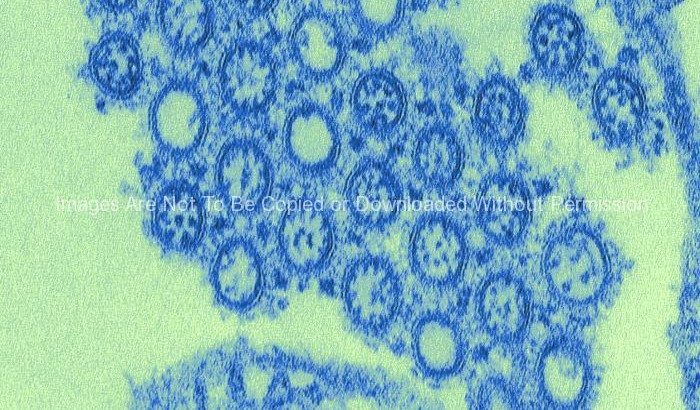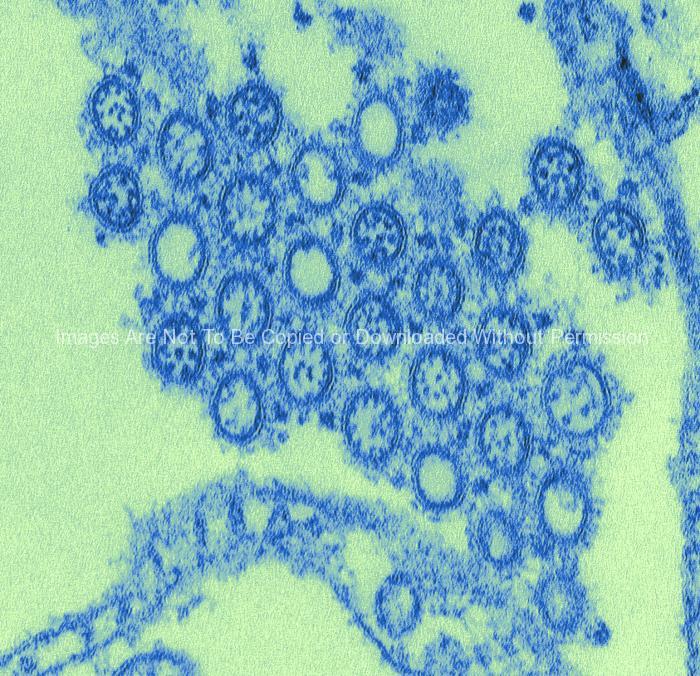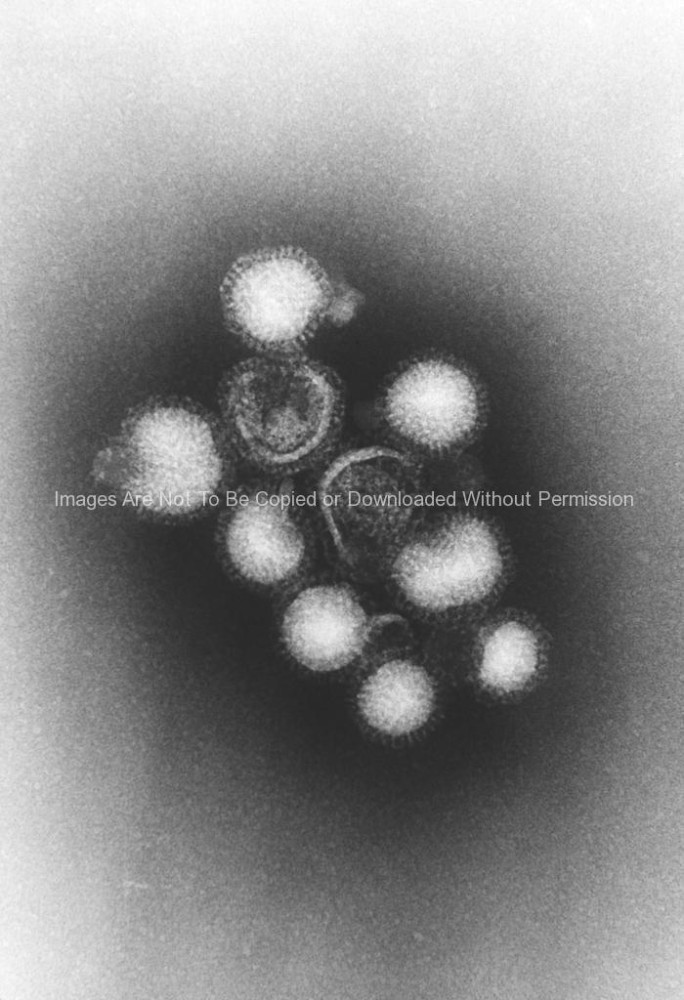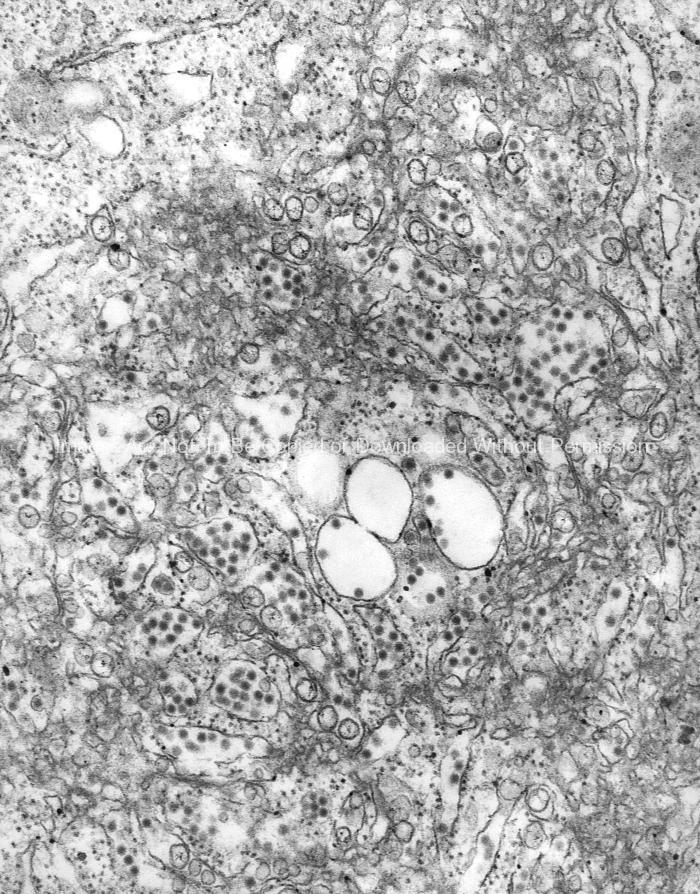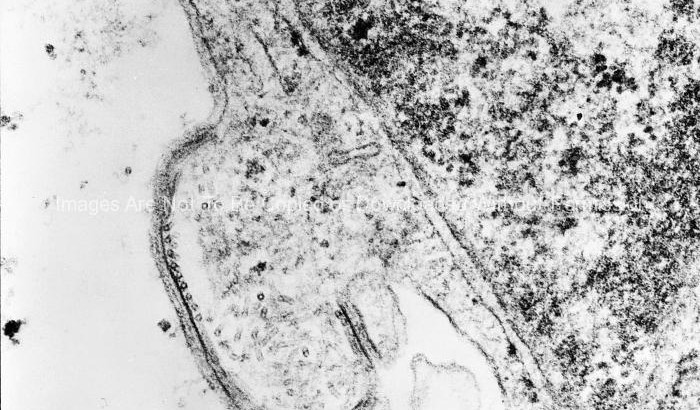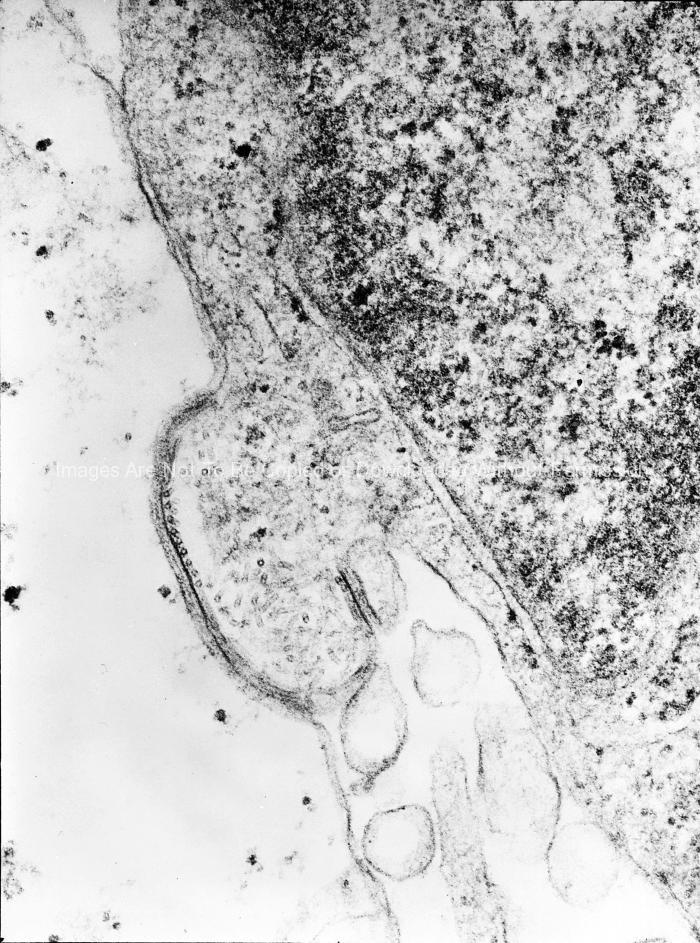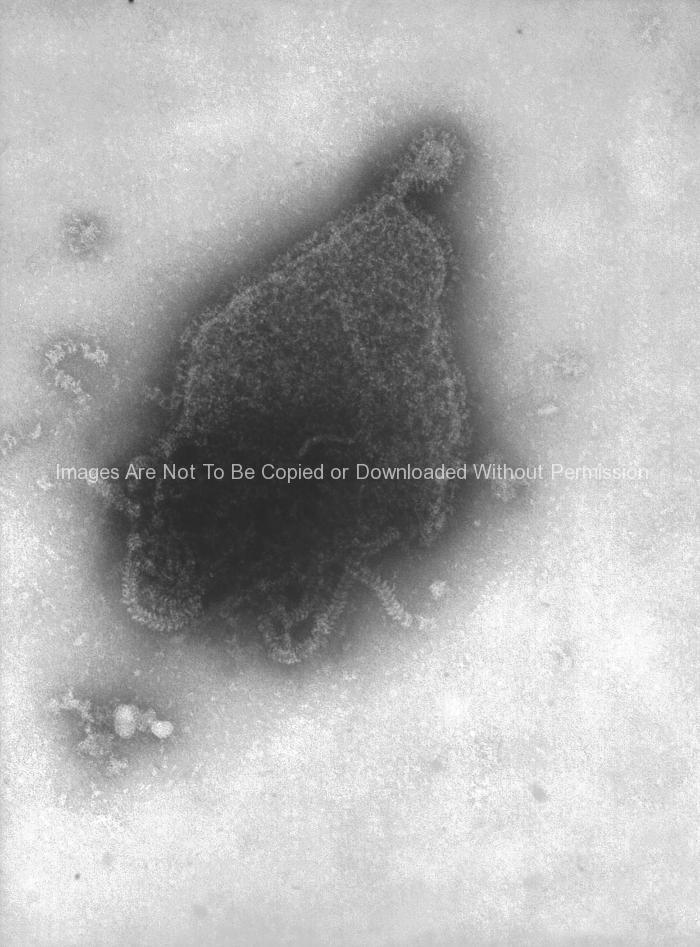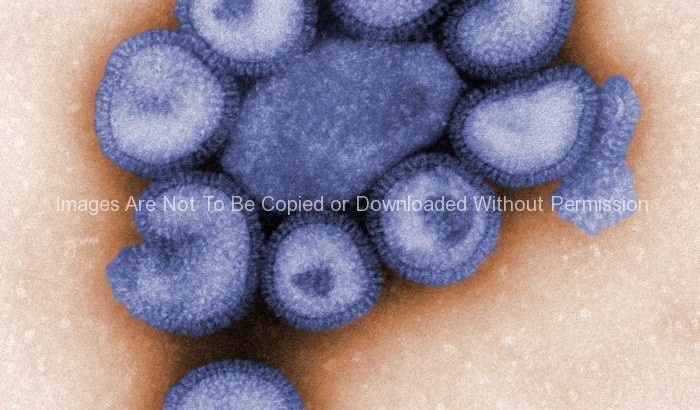A medical worker giving a nasal spray influenza vaccine to a patient. (H1N1)

Hispanic Female Nurse Giving Nasal Spray Vaccine to African American Patient
A medical worker giving a nasal spray influenza vaccine to a patient. (H1N1)

Micrograph of Neuraminidase and Hemagglutinin “spikes”
This negatively-stained transmission electron micrograph (TEM) depicted a small grouping of a number of influenza A virions, which also revealed at this very high magnification, the neuraminidase and hemagglutinin “spikes” protruding from the virions’ proteinaceous capsid coats. At its core, the genome consists of eight single-stranded segments of a negative-sense RNA ((-) ssRNA). Influenza A virions can be observed as being both spherical and filamentous in nature. Each strand is enclosed in, or “encapsidated” inside the viral nucleoprotein, thereby, forming what is known as the ribonucleoprotein (RNP) particle.
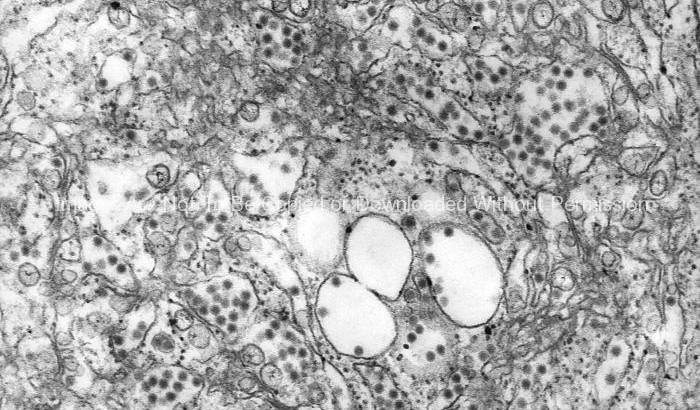
Russian Spring-Summer Encephalitis (RSSE) Virions
This negatively-stained transmission electron micrograph (TEM) revealed the presence of numerous Russian spring-summer encephalitis (RSSE) virions, which are members of the virus family, Flaviviridae. RSSE is transmitted when one is bitten by a Ixodes persulcatus hard tick, and is therefore, referred to as a “tick-borne encephalitis” (TBE).
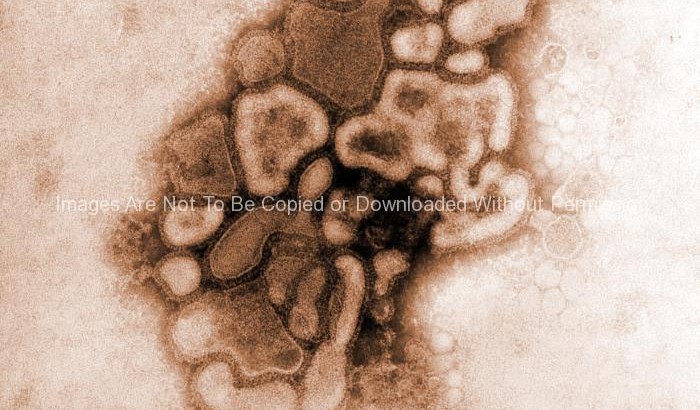
A/New Jersey/76 (Hsw1N1) Virus
Under a plate magnification of 37,800X, this colorized transmission electron micrograph (TEM) depicted the A/New Jersey/76 (Hsw1N1) virus, while in the virus’ first developmental passage through a chicken egg.
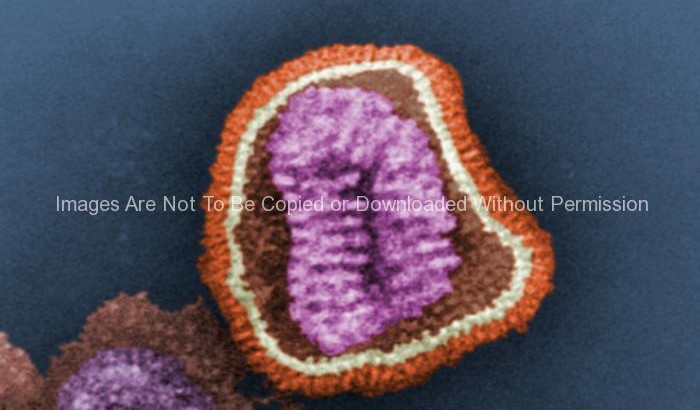
Ultrastructural Details of an Influenza Virus Particle
This negative-stained transmission electron micrograph (TEM) depicts the ultrastructural details of an influenza virus particle, or “virion”. A member of the taxonomic family Orthomyxoviridae, the influenza virus is a single-stranded RNA organism.

